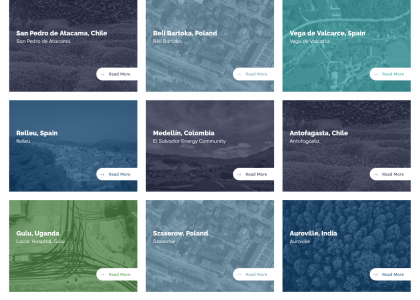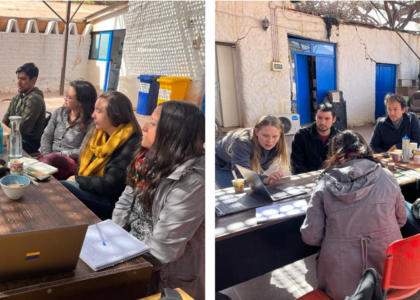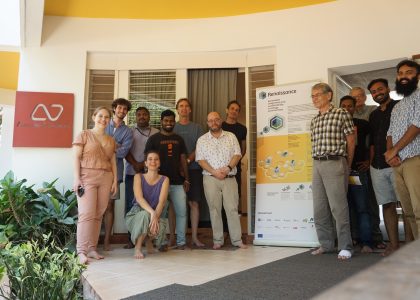by Maria Luisa Lode, @Vrije Universiteit Brussel
Two communities in Argentina tested the RENAISSANCE project participatory approach
What is the project replication potential in Argentina? Here our last report from two different communities, contacted with the support of NOVA Vectors, an NGO based in Cordoba, in early 2022. People from industry, research, and local government have been engaged by the NGO which works with local communities and companies such as Brinkmann and Canter, the construction company for Reserva Tajamar. NOVA Vectors has facilitated and organized the engagement of different stakeholders at the Brinkmann community as well as at the Reserva Tajamar.
Workshop Development
Part I: Definition of the objectives of the interest groups
The energy consumption and production data were used for both sites. Therefore, the sites mainly differ in the stakeholders involved and the weights allocated to the objectives during the different MAMCA workshops. Through the survey, the 58 respondents shared several concerns among each other such as the lack of economic and political incentives to invest in renewables as fossil fuels remain a lot cheaper. They were also concerned about the distance between the initiators of the project and the local population. However, they highlighted that they would like to become a pioneer in the region, and that the government would adopt a legislation that is favouring renewables. The respondents are in favour of direct participation in the energy market, and to sensibilize and educate the members of the community concerning the efficiency and positive impacts of the energy transition.
At Brinkmann, representatives of an energy cooperative, the municipality, architects, and citizens were invited and present during the workshop. Among the entire respondents, reduction of the energy bill, behaviour change, grid liability, energy efficiency, energy autonomy, reduction of emissions, and education were the objectives selected as important. Among these, the architects rated energy efficiency as most important followed by reduction of emission, reduction of the energy bill, energy autonomy, and behaviour change. The energy cooperative weighted the reduction of the energy bill, then investment costs, behaviour change, reduction of emissions and energy efficiency as most important (in the respective order). The municipality ranked reduction of emissions, change of behaviour, regulatory/legal/financial support, reduction of the energy bill, and employment as most important. The residents scored the reduction of the energy bill, investment costs, inclusion, energy efficiency, and the green image as most important (from most to least important)
At Reserve Tajamar, architects, residents, and the construction company Canter participated the MAMCA workshop. The residents selected and ranked the objectives like the following (from high to lower importance); investment costs, reduction of the energy bill, inclusiveness, green image, and energy efficiency. The architects selected and ranked energy efficiency, behaviour change, reduction of emissions, energy autonomy, and reduction of the energy bill. They further mentioned that for them the choice of material for constructions and to create a nexus design is crucial. Designing an EC from scratch should not only include considerations on energy but also connecting water, waste, and energy. The construction company Canter selected and ranked investment costs, reduction of the energy bill, energy efficiency, reduction of emissions, and behaviour change. Canter lied focus on the economic feasibility while the architects highlighted the need for a holistic approach. The residents were also concerned about the costs and maintenance responsibilities but were optimistic about the positive impacts of implementing an EC in terms of inclusiveness and social aspects (such as knowing the neighbours and working together).
Part II: Analysis of scenarios for the deployment of the solar community
At both sites, the same scenarios were analysed and evaluated. The first scenario is the reference scenario where energy is directly consumed from the grid and no renewable energy is produced. In the second scenario, the prosumer scenario, citizens produce and consume energy based on their individual generation assets. The second scenario was the Renewable EC, in which citizens jointly invest, produce, and consume renewable energy based on small, collectively owned assets. The last scenario is the distributed generation scenario. This scenario reflects the proposed Argentinian regulation on community energy /ECs. Here, the citizens invest jointly in larger generation assets, located in the proximity but are not dispersed locally. An example would be a closely located PV field that was collectively funded.
Conclusions
Combining both the weight of the objectives and the performance evaluation, resulted in the multi-actor view. At both sites, there was not one clear scenario that outperformed the others for most stakeholders. At Brinkmann, the renewable EC and the distributed generation scenario were performing best by all stakeholders, with a slight preference for the renewable EC by the residents, the municipality, and the architects.
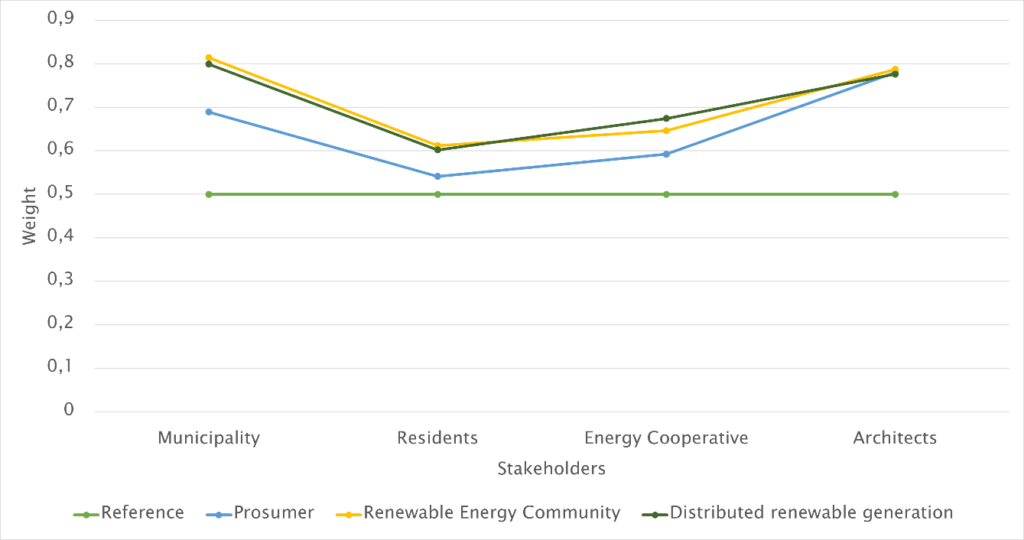
At Reserve Tajamar, the renewable EC showed a better performance for the residents and architects. For the Canter company all scenarios performed similarly with a slight advantage for the distributed generation scenario due to its better evaluation on reduction of the energy bill and investment costs (the key objectives of Canter). The prosumer scenario also outperformed the renewable EC scenarios, due to the better performance on energy efficiency.
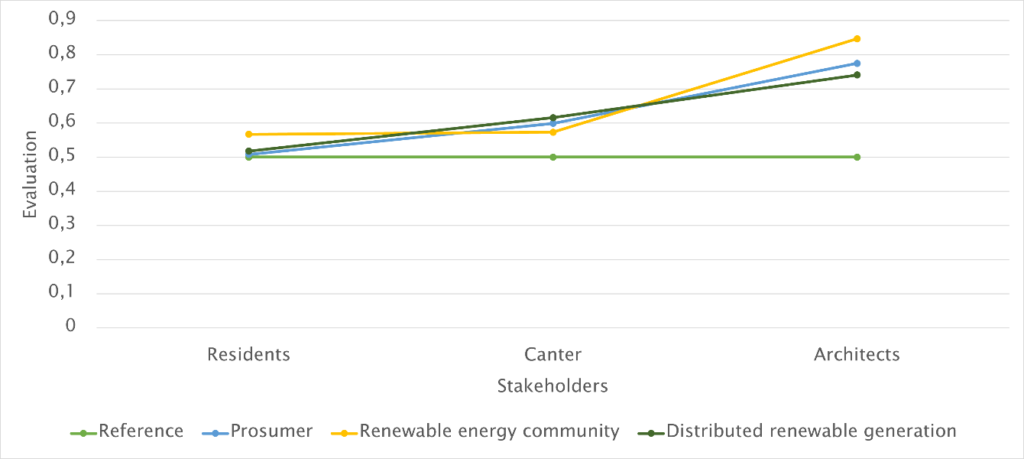
Through discussing the different advantages of the two scenarios renewable EC and distributed generation, all participants agreed that the scenario of distributed generation would be easier to implement, also considering the national support for it.
Follow us:
